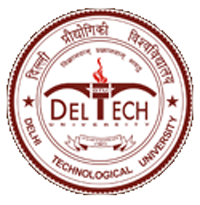Please use this identifier to cite or link to this item:
http://dspace.dtu.ac.in:8080/jspui/handle/repository/22134Full metadata record
| DC Field | Value | Language |
|---|---|---|
| dc.contributor.author | KUMAR, AMIT | - |
| dc.date.accessioned | 2025-08-21T06:39:42Z | - |
| dc.date.available | 2025-08-21T06:39:42Z | - |
| dc.date.issued | 2023-06 | - |
| dc.identifier.uri | http://dspace.dtu.ac.in:8080/jspui/handle/repository/22134 | - |
| dc.description.abstract | The environment and living things are seriously threatened by heavy metal ions. The recovery and detection of heavy metal ions in water are extremely significant due to the consistent supply of heavy metal ions in water resources, which poses health risks to human and environment. The removal of heavy metal ions from wastewater is of primary importance for a clean environment and human health. Consequently, there has been an increase in interest in the creation of efficient adsorbents and sensors. A variety of reported methods have been devoted to the removal of heavy metal ions from various wastewater sources This project comprehensively and critically reviews and discusses these methods. The adsorption mechanism is defined by the physicochemical properties of adsorbent and heavy metals and operating conditions Generally, heavy metal ions can be adsorbed on to the adsorbent’s surface, This method has been reported to have low operating costs, high removal capacity, and easy implementation, and simple treatment by regenerating the adsorbed heavy metal ions. The porous organic-inorganic hybrid materials known as metal-organic frameworks (MOFs) comprise metal ions connected by the organic ligands. MOFs are eliminating these heavy metal ions with excellent results. I looked into the various MOFs and their ability to bind to these heavy metal ions in this report. This article reviewed recent development and current status of detection of heavy metal ions using porous materials. Additionally, a common mechanism for the adsorption of these heavy metal ions is explored. There have also been studies on peptide-based gels that are efficient at cleaning up organic dyes and oil spillS. | en_US |
| dc.language.iso | en | en_US |
| dc.relation.ispartofseries | TD-8217; | - |
| dc.subject | REMOVAL OF HEAVY METAL IONS | en_US |
| dc.subject | POROUS MATERIALS | en_US |
| dc.subject | MOFs | en_US |
| dc.title | REMOVAL OF HEAVY METAL IONS USING POROUS MATERIALS | en_US |
| dc.type | Thesis | en_US |
| Appears in Collections: | MSc Chemistry | |
Files in This Item:
| File | Description | Size | Format | |
|---|---|---|---|---|
| Amit Kumar M.Sc..pdf | 1.22 MB | Adobe PDF | View/Open |
Items in DSpace are protected by copyright, with all rights reserved, unless otherwise indicated.



